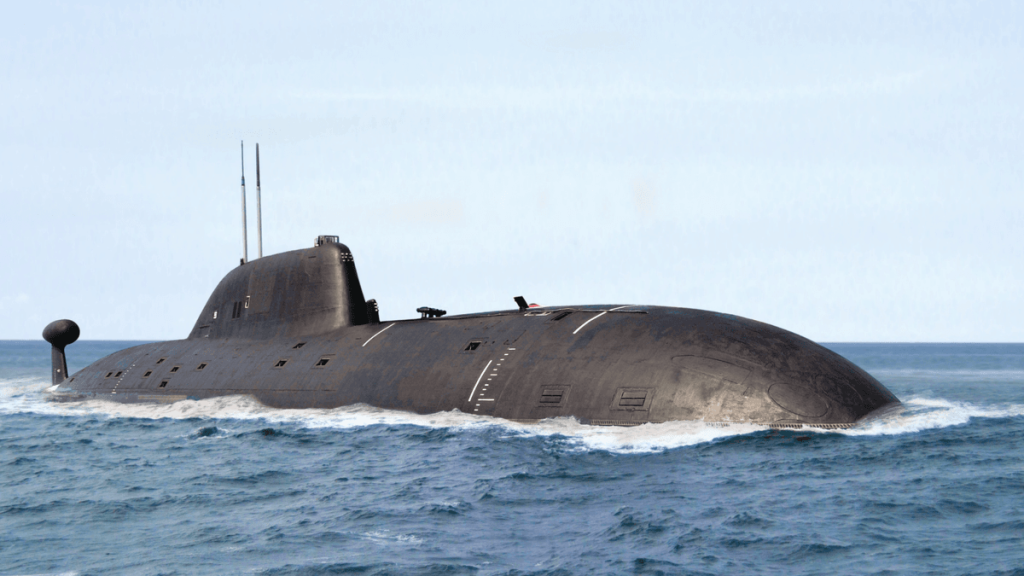In a radical shift in energy logistics, Russia is exploring the development of nuclear-powered submarines to transport liquefied natural gas (LNG) from its Arctic regions to Asia. This ambitious project, spearheaded by the Kurchatov Institute in collaboration with Gazprom, comes in response to significant challenges posed by Western sanctions and the pressing need for alternative gas transport methods following Russia’s invasion of Ukraine.
The Context of the Initiative
The backdrop to this innovative approach is the acute shortage of traditional ice-class LNG carriers, which are specifically designed to navigate the icy waters of the Arctic. With rising demand for natural gas in Asia and a limited number of suitable vessels, Russia’s exploration of nuclear submarines as gas carriers represents a strategic pivot in its energy export strategy.
Mikhail Kovalchuk, the director of the Kurchatov Institute and a close ally of President Vladimir Putin, recently presented detailed plans for this new form of gas transportation. The initiative aims to create a model that can withstand the harsh Arctic conditions while efficiently transporting gas.
Technical Specifications of the Submarine Gas Carrier
The proposed nuclear underwater gas carriers are designed to have a massive cargo capacity of around 180,000 tons. This capacity is crucial for integrating these vessels into existing transport infrastructures and meeting the logistical demands of gas delivery. Key specifications outlined in Kovalchuk’s presentation include:
- Dimensions: The submarines will be approximately 360 meters in length and 70 meters in width, with a draft of no more than 14 meters.
- Propulsion: Equipped with three Rhythm-200 nuclear reactors, these submarines will use three electric propeller motors, each delivering 30 megawatts of power.
- Speed: The vessels are expected to maintain a speed of about 17 knots, significantly reducing travel time along the Northern Sea Route from 20 days to just 12 days.
These specifications not only illustrate the potential efficiency of the submarines but also highlight their capability to operate in icy waters where traditional vessels may struggle.
Overcoming Arctic Challenges
One of the significant advantages of using submarines for gas transport is their ability to operate beneath the ice, avoiding many of the challenges faced by surface vessels. Kovalchuk indicated that while ice coverage poses difficulties, the nuclear submarines would be able to provide year-round transportation from terminals along the northern coast of western Russia.
However, challenges remain, particularly in shallow areas like Ob Bay, which may not accommodate submerged travel for such large vessels. Consequently, icebreakers would still be needed to assist these submarines from ports like Sabetta and Gydan into deeper Arctic waters.
Safety and Efficiency Considerations
Russian officials assert that utilizing submarines for gas transport could enhance safety compared to traditional surface carriers and pipelines. They argue that a few of these nuclear vessels would be capable of transporting the same volume of gas as a subsea pipeline, making them a viable alternative for meeting international demand.
This emphasis on safety is particularly relevant in the context of rising geopolitical tensions and the need for secure energy supply chains. The nuclear-powered aspect of the submarines also introduces a level of resilience, potentially allowing for more reliable delivery of gas under various operational conditions.
Addressing the LNG Carrier Shortage
The initiative to develop civilian nuclear gas carriers has arisen in part due to a significant shortage of traditional ice-class LNG tankers. Novatek, Russia’s largest LNG producer, had planned to acquire 16 such vessels this year. However, contracts were terminated due to international sanctions, leaving the company seeking alternative solutions.
Compounding these challenges, domestic production at the Zvezda shipyard, controlled by Rosneft, has encountered technological hurdles, further complicating Russia’s ambitions for the Northern Sea Route. The expectation had been to transport 80 million tons of cargo along this route in the current year; however, forecasts suggest that only 36 million tons will be achieved, reflecting the difficulties facing Russia’s maritime logistics.
The Future of Energy Transport
As Russia continues to grapple with sanctions and a shifting geopolitical landscape, the development of nuclear-powered gas carriers could signal a transformative change in how energy is transported. The strategic use of nuclear submarines may allow Russia to circumvent some of the challenges posed by traditional shipping methods while enhancing its capacity to export natural gas to Asia.
This initiative not only represents a technical innovation but also showcases Russia’s adaptability in the face of adversity. By investing in advanced technologies, Russia aims to sustain its position as a key player in the global energy market, particularly as demand for LNG continues to rise.
Conclusion
Russia’s ambitious plan to utilize nuclear submarines for gas delivery reflects a bold and innovative approach to overcoming the logistical challenges posed by the Arctic environment and current geopolitical constraints. The collaboration between the Kurchatov Institute and Gazprom aims to create a new model for gas transport that prioritizes safety, efficiency, and reliability.
As the world continues to navigate complex energy dynamics, this initiative underscores the importance of exploring unconventional solutions to meet global demand. If successful, the development of these nuclear gas carriers could reshape the landscape of energy transport, positioning Russia to maintain its influence in the energy sector for years to come. The full implications of this venture will unfold in the coming years as technological developments progress and the geopolitical landscape evolves.

